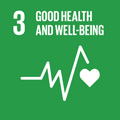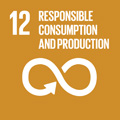- Docente: Marcello Trevisani
- Credits: 4
- SSD: VET/04
- Language: Italian
- Teaching Mode: Blended Learning
- Campus: Bologna
- Corso: Single cycle degree programme (LMCU) in Veterinary Medicine (cod. 5984)
-
from Feb 24, 2025 to May 30, 2025
Learning outcomes
At the end of the course, the student must understand the fundamentals of epidemiology related to foodborne zoonotic diseases. They should know how to intervene to control hazards by applying food hygiene regulations. Additionally, they need to acquire relevant information about the production chain for safety management (surveillance and monitoring plans). The student should be able to collaborate in epidemiological investigations during foodborne disease outbreaks and communicate information and data to identify the source and limit its spread. Understanding diagnostic techniques to identify, characterize, and quantify organisms causing foodborne illnesses is essential. They must also grasp the factors influencing multiplication, survival, and death of these organisms. Furthermore, the student should evaluate the risk associated with animal-origin food production and be capable of planning and managing safe food production using the HACCP system. Lastly, they need to comprehend how food industry operators can define appropriate process objectives to achieve food safety goals set by legislation. Evaluating compliance with regulations, preparing audit reports, and utilizing databases and software to estimate risk and shelf life of food are also part of their knowledge. Lastly, understanding food preservation principles and the biological causes of alteration, including potential toxic effects due to microbial changes, is crucial
Course contents
1. Presentation of the course. Food supply chains and hygiene.
2. The microbial flora of food. Adaptation of bacteria to the foods’ characteristics. Spoilage microorganisms and indicators of the shelf life. Methods of storage and shelf-life extension. Production of hams and salami, hurdle theory, function of salt, additive and use of starter cultures.
3. The microbial flora of meat and slaughter hygiene.
4. The microbial flora of milk. Milking Hygiene, safety aspects of milk processing and cheese production
5. Food sampling for monitoring and characterization methods of microorganisms. Surveillance of foodborne diseases.
6. Use of predictive models to estimate the growth, survival and death of microorganisms in food production processes. Tutorials using the Combase Software.
7. Food botulism: pathogenetic, epidemiological aspects and control methods.
8. Listeriosis, microbiological criteria, ready-to-eat products.
9. Adaptation of the microorganisms to the enteric environment. Virulence factors and pathogenetic mechanisms of the main enteric pathogenic bacteria and extra-intestinal complications (Online Lessons).
10. Aetiology, characterization, clinical aspects and methods of control of Salmonella, Escherichia coli and Campylobacter infections. Biosecurity measures on farms and at slaughterhouses.
11. Investigation of foodborne disease outbreaks: methods of surveillance and recognition of an outbreak of foodborne illness; investigations to develop hypotheses, data analysis, calculation of the odds ratio with and without matching, traceability, control methods (Online Lessons and tutorial on an outbreak investigation).
12. Hygiene and diseases transmitted by fishery products.
13. Cleaning, disinfection and pest control procedures in the food industry.
14. Exercise on monitoring and verification procedures in self-control plans.
15. Structural and hygienic and sanitary requirements of production plants, self-control plans and standard operating procedures, the HACCP system.
Readings/Bibliography
Educational materials consist of recommended text books and of keynotes and documents available to students in the appropriate https://virtuale.unibo.it/ [http://campus.cib.unibo.it/] website or via the website of the teacher of the course http://www [http://www/] . unibo.it / teachers / marcello.trevisani
The recommended textbooks are:
- Various Authors (by Giampaolo Colavita). Hygiene and technology of food of animal origin. Point Veterinaire Italie. 2012
Teaching methods
The teaching consists of lectures (35 hours), online lessons on the portal Virtuale (6 hours) and practical classes (7 x 4 hours)
a. Lectures
They provide an illustration of the production chains of food (meat, fish and dairy products) to make the students appreciate what aspects are most critical and how the implementation of good hygiene practices and controls process to guarantee food security in compliance with the rules. For the constraints of time and availability of facilities (slaughter faculty, stable and dairy) will be used also videos and pictures to facilitate the understanding of the different, important production chains.
b. Practical lessons
These are mainly carried out by dividing the students into two groups in shifts of 2 hours.
Case studies will be used to evaluate the control methods for the microbial hazards in food by adopting a predictive microbiology approach
An interactive software will be used to learn the investigation methods that are used to detect the origin of foodborne outbreaks and implement control measures.
At the faculty slaughterhouse the students will approach the hygiene auditing in beef slaughterhouse and the use of checklists for slaughterhouse structure.
Assessment methods
The examination at the end of the course aims to assess the achievement of the main learning objectives:
1) Ability to gather and interpret in an effective and comprehensive way the laboratory (microbiological) data and the reports of epidemic surveillance on major food borne illness;
2) Knowledge of food technology (used in processing of meat, milk and dairy products, fish products) hazard assessment (raw materials and processes) of control measures (CCP) and the principles of hygiene
3) Ability to appreciate the pathogenic mechanisms, the potential for growth and survival in foods of the main biological agents responsible for diseases with food and their ability to resist treatment of storage and preparation of food for consumption.
The final grade of the course "Safety and food hygiene" consists of the synthesis of the final evaluations of the different topics that are treated in the course. The evaluation is expressed with a mark out of thirty for the exams. The test is passed with a score of at least 18/30. The student has the right to refuse the verbalization of the proposed positive grade. Students with DISABILITIES or SLDs must contact the teacher to have adaptations to teaching during the lesson phase or in the final evaluation phase. They will do it by email, by entering the reference staff they are followed by the faculty in the C/C.
The weighted average of the scores get for each module will be recorded in the exam report. Laude is given when the maximum score has been given for all the modules.
Assessment for the "Food Hygiene and Technologies" Course
Student evaluation for the Food Hygiene and Technologies course consists of a written exam and, if necessary, a supplementary oral exam.
The written test is designed to assess the student's ability to make informed decisions in food safety management through the application of HACCP principles.
The test includes:
1. Six multiple-choice questions covering theoretical course content and two questions on analytical epidemiology. Each correct answer is worth 0.5 points, for a total of 4 points. Some questions may have more than one correct answer; incorrect responses will result in deductions. (Estimated time: 25 minutes)
2. Two short-answer questions, each worth 0.5 points, totaling 1 point. (Estimated time: 5 minutes)
3.Two short essay questions (15 lines maximum), evaluated on clarity, relevance, and appropriate use of terminology. Each essay may earn up to 2.5 points. (Estimated time: 20 minutes)
4. One numeric-response question involving predictive microbiology models (e.g., ComBase software). A correct answer is worth 2 points. Minor approximation or marginal errors, if acknowledged by the instructor, result in a 1-point deduction. (Estimated time: 15 minutes)
When the 70-minute time limit is reached, the quiz will automatically close, saving all completed responses up to that point.
The maximum achievable score is 12 points, although only 10 points are considered in converting the score to the standard 30-point grading scale. This means that students can still achieve full marks even if a few answers are incorrect or left unanswered.
To pass, a minimum of 6 points is required. However, students scoring at least 5 points may take a supplementary oral exam to improve their grade and potentially pass the course.
> Important Note: Quiz attempts can only be resumed within the same browser session. Any attempt to access the same quiz from a different computer, device, or browser will be blocked. This measure helps to ensure academic integrity.
The instructor may verify the authenticity of the students' short written assignments through a brief oral examination.
The final grade will be expressed in thirtieths:
- Grade 18, sufficient (6 points out of 12, with at least a sufficient evaluation of 3 out of 6 points in both tests).
- Grade 19-24, adequate skills (7.6-9.6 points out of 12).
- Grade 25-28, good skills (10-11.2 points out of 12).
- Grade 29-30, excellent skills (11.3-12 points out of 12).
During the practical exercises, students will be guided in the use of estimation models and in the analysis of risk factors. On the 'virtual' teaching portal, practice tests for microbiological risk assessment are available.
Students will be informed of the result on Almaesami (student careers). Students with an unsatisfactory, albeit sufficient, score can agree with the teacher to take an additional oral exam. It is also possible to retake only one of the two tests (practical/theoretical part) to obtain a better or at least sufficient evaluation in both.
---
Is there anything else you need help with?
Teaching tools
Keynotes of lectures and didactic documents used for the practical training are published in the UniBo server, in the section 'virtual learning environment'. Textbooks are available at the Department's library.
Office hours
See the website of Marcello Trevisani
SDGs


This teaching activity contributes to the achievement of the Sustainable Development Goals of the UN 2030 Agenda.
